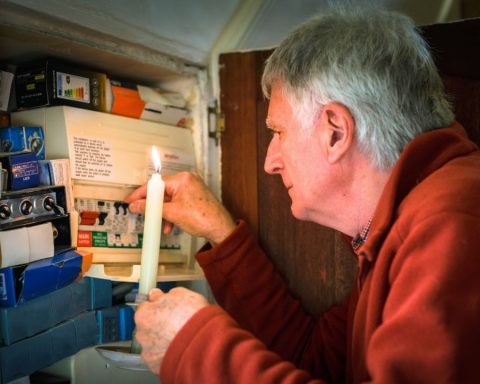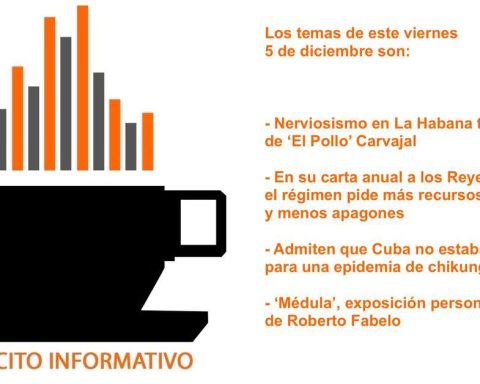
A study carried out by the Urban Security Center of the Alberto Hurtado University Law School, which is executed by the Municipality of Santiago, concluded that the perception of homeless people has not only increased but also has become complex.
This can be explained, according to the research, due to a greater “visibility” when occupying public spaces; such as squares and parks. In addition, there is the increase in fear due to the pandemic regarding health regulations and the erroneous linking of homeless people with criminal groups or activities.
Another factor that would explain the high perception of homeless people is the irruption of migrants in public spaces that, due to their migratory situation, has generated rejection by xenophobic groups that seek the eradication of these populations.
The mayor of Santiago, Irací Hassler (PC), addressed the conclusions of the study and pointed to the Ministry of Social Development as the main person responsible, because, she assures, they have not wanted to meet with her. This would be added to the 24% reduction in the resources received by the municipality to manage this situation.
“I think it was important to be able to point it out here, together with the lack of political priority that the Ministry of Social Development has maintained in this approach, we as a municipality have made a budgetary effort with an increase of 63% for homeless people” , commented the communist mayor.
For Mayor Hassler, the study has the value of identifying that the phenomenon of people living on the street is multi-causal with a diversity of profiles derived from daily lives with breaks in family ties and also from the new phenomenon that has to do with the increase in families full of homeless migrants who have arrived in the Metropolitan Region. “All these situations need psychological intervention, support in labor insertion and an approach with a gender and human rights approach,” she emphasized. And he added that after understanding the dimension of the problem, the challenge is to be able to advance as a commune and as a country so that people in street situations have an alternative and also those who are in a situation of vulnerability that could eventually reach the situation of street, the local government can arrive earlier and avoid this situation.
On the other hand, the head of the Social and Human Development Division of the regional government, Evelyn Magdaleno (PS) considered that, given the data of this investigation, it is urgent that this issue be addressed in an integral way and for that, society is required civil society, the municipalities, the regional government and change the focus in the intervention. For Magdaleno, the lack of policies has led to a welfare approach that is often wrong in the intervention, which is why the regional government announced a new governance in alliance with the municipalities and the academy to “run the fence and start from scratch and that the solution is not to get a place in a shelter, but to answer the question how do we make this intervention have a governmental exit with a focus on housing, on the dignity and autonomy of people, “he said. The regional government official also valued the qualitative analysis of the study that helps to eliminate a lot of myths that circulate about homeless people, especially those that relate them to crime and carrying weapons: “Although there are some situations of crime, there are no It’s the vast majority,” he said. And he ended his presentation with the announcement that together with the municipalities of Providencia, Independencia and Recoleta they are evaluating a pilot program to be able to implement it throughout the Mapocho River axis.
It is worth mentioning that the study was carried out in May 2021 and in terms of the origin or initial cause for settling on the street, 47% of people said they had problems with family or partner relationships; 58% of them habitually consume alcohol and 23% acknowledge that they have an addiction to alcohol, to the consumption of other substances or drugs and 45% declared that they do not consume, in contrast to 18% who declare that their consumption is repeated and you can’t control it. The homeless person is someone with broken ties, especially family, affective and personal ones; and, on the other hand, they are people who are disconnected from the social system (educational, economic, productive).
The street is not life for anyone
José López, better known as Pepe, 47, has been living for a year and a half in his tent on the Mapocho river basin at the height of the Loreto Bridge after being laid off due to the pandemic. Until before the first forty derived from Covid 19, he worked at the Hotel Atton and had his apartment on Calle Almirante Barroso, but once it was closed due to the lack of tourist movement there was no more work and now he is still looking for work, but when he applies and says that He has no address, they discriminate against him. Don Manuel, 90 years old, lives on Portugal street and came to this place after falling out with his sister and leaving his life as a zarzuela singer, which at one point no longer gave him a chance to survive. He became part of the list of homeless people in the Santiago commune five years ago, he lives on his pension and on the charity of the neighborhood residents. Natalia Cases, 42 years old, walks along Portales Avenue where she has her new friends who share, like her, the high vulnerability of those who spend the night on the street and in shelters. For her, being a woman on the street, “she doesn’t give it to anyone.”
These testimonies are part of the 733 Chileans registered by the consultancy of the Homeless People Intervention Program, a study awarded by the Urban Security Center of the UAH Law School, which is part of the Neighborhood Revitalization Program. and Emblematic Patrimonial Infrastructure technically coordinated by the Undersecretariat for Regional and Administrative Development and executed by the Illustrious Municipality of Santiago.
Another perspective that it provides and that is relevant for the municipality of Santiago is that it recognizes that life on the street “is not an option”, but rather a condition resulting from a concatenation of causes related, for the most part, to the extreme social vulnerability in where these people were before becoming homeless. “The vast majority of people who are on the street would like to stop being so,” said the coordinator of the Center for Urban Security, Germán Díaz.
Another element that alerts the authorities is the worrying exposure to risks in the city because they are witnesses and victims of various crimes (assaults, robberies, theft, abuse). The street, especially at night, is perceived as a high-risk space that generates fear, concludes Díaz.
Finally, the researcher Anita Munizaga presented the main challenges to address the phenomenon from the State. His presentation started by defining that life on the street implies a permanent violation of Human Rights and that at a global level it is the population exposed to the highest risks in the face of natural catastrophes, global, national and local crises and that in this study the same people declare the need to live in a place that provides them with stable security “the street is not life for anyone”. And as for the recommendations, Munizaga was clear in identifying that it is necessary to reevaluate the different forms, designs and planning of habitability and urban development, to rethink the multiple uses that public space implies, the value of the land, the real estate market and the economic crisis that highlights the risk of living on the street by the most vulnerable groups.
To conclude, this study contributes to a better understanding of the phenomenon, demystify perspectives and broaden the understanding of who they are, why they live on the street, their ways of inhabiting it and the needs that arise from it. In this sense, the researcher, Anita Munizaga pointed out that this consultancy with the figures obtained and the qualitative analysis leaves new questions that question not only the State but also the ordinary citizen: How many hidden realities are there on the street that we do not know? in value of public space? Is it a right to inhabit the street? What does the phenomenon of the street reflect about the society that we are?
The full seminar is available at this link.

















